Между Средиземноморьем и варварским пограничьем - [55]
Шкаренков П.П. Римская традиция в варварском мире: Флавий Кассиодор и его эпоха. М., 2004.
Addressing the representations of the Merovingian kingdom in the narrative sources, hagiography, and legal records, this book seeks to examine the relationship between “fact” and “representation” in the Frankish history of the V to VIII centuries.
Taking for analysis the key events in the history of the merovingian Gaul, this study attempts to investigate the discordant aspects of their representation and to analyse the ways in which these incongruences or conflicts in representation are due to the limitations of discourses and narratives predicated on the sources’ genre. The book also investigates the ways in which differences in source genre may help explain the traditional and yet highly subjective chronological picture of the development of the Frankish kingdom over two and a half hundred years. Drawing parallels between the main events of particular periods, the sources and their authors, the study seeks to suggest that the traditional picture of the significant changes in the merovingian polity and infrastructure from the early, more successful period during the rule of Clovis (486/487–511) and Chlotar I (511–561) to the later, less successful one may be an aberration cause by the changes in literate culture, in the types of documents and in the specific perspective of authors and scribes composing the documents rather than by objective causes. Thus in this book I attempt to show how the historical sequence of traditional Late Antique narrative histories (Gregory of Tours, Fredegar, “Liber Fhstoriae Francorum”), of hagiography (Vita Balthildis reginae etc.) and of the charters and royal responses to litigation determined the image of each of the periods. At the same time, I argue that despite the emphasis on differences that scholars have sought to emphasize in describing each of the periods there is a great deal of continuity between the earlier and later part of the Merovingian’ reign, if one can divert from the traditional narrative account of military victories and royal control over territories and domains and look instead at the mechanisms of soft power that underlay the rule of the Frankish kings. The book argues that if one eliminates the bias of portraying particular historical periods that had originated because of the difference in the approach provided by sources, one wIII see a relatively homogenous narrative which used the same clichés, or rather, archetypes, both for the times of Clovis, his sons and grandsons and for the times of Clovis II and his progeny with Balthild. Central to this stroppeddown narratives were the ideas of the Franks’ integration into the Mediterranean culture and into the system of threepartite representation of authority which had been common to it since Caesar and Tacitus. Regardless of their origin, the writers of histories, authors of saints’ lives and the scribes who put together royal responses to tough legal cases all thought of the king as the peacemaker and an intermediary who was supposed to incorporate military prowess, sacrality of both the rex and of the priest, and the special status of the judge which in their case originated from the Roman emperors’ role in adjudicating conflicts by means of rescripts.
Chapter one addresses the formation of the kindom of the Franks and undertakes to examine the events of Clovis’ coming to power, of his baptism and of the delineation of the boundaries within the family between the winning and the losing lines. Constructing the story of the Franks’ forceful conquest of Soisson and of Northern Gaul in general, which goes against the archaeological evidence and information from other sources, Gregory of Tours, as this study suggests, followed his own goal of presenting the Franks as the group whose legitimacy in excercising power did not depend on the Roman empire’s sanction. His description of Clovis’ visit to Tours showed the bishop attempting to portray the king as the duly chosen lieutenant of the Byzantine emperor, but the one whose prerogatives were transferred to him not by the emperor’s legates but the bishop of Tours. Thus he saw the Frankish kings as both belonging to the Mediterranean world and distinct from it, as being part of the imperial aristocracy and elite, and at the same time as conquerors who owed their authority to no one. The chapter also suggests that Gregory of Tours made his choice of supporting the Austrasian brach of the dynasty in the person of Childebert over the Soisson branch, represented by Chilperic. This choice was due to the attempt of Chilperic as the king of Neustria to claim control of Tours to himself, whereas Childebert as the more distant ruler did not arise the same suspicions and negative attitude. This predilection towards who he thought was the “better” king he thought should transform into historical reality. But Gregory of Tours’ representation was far from being a true representation of historical trends as the branch of Childebert lost in the long run and that of Chilperic managed to become the main one and to produce all remaining kings of the Merovingians. Thus the bishop of Tours’ highly subjective approach highlighted the episcopal privilege and put to the fore the king who recognized it, while the historical situation rapidly developed towards favoring the branch that the prelate saw as ill-fitted and doomed. While Gregory espoused the idealized picture of the kingdom as an heir to the Roman diocese where the bishops and cities were key to power structures, while the situation rapidly developed towards the kings appropriating the powers of imperial representatives that had earlier been reserved for general like Aegidius. Gregory underappreciated the capability for maneuver that the youngest son of Chlotar I from his last marriage could muster and generally failed to grasp the attempts of the weakest king in the family hierarchy to aspire to the position of an educated philosopher-king and intermediary. But in Fredegar’s Chronicle the accents changed as the author sought to emphasize continuity between the Frankish kings and the Roman empire, whose generals their predecessors could have served as soldiers. In the “Liber historiae francorum” the representation of the Frankish kingdom came to resemble the straight line from the barbarian military commanders of the fifth century to the Christian kingdom of the seventh and eighth centuries. Thus one may notice that the representation of the Frankish kingdom changed significantly, from being that of the episcopal republic under the aegis of the good kings and in constant competition with the unruly representatives of the Merovingian family, to the kingdom that incorporated in its unity with the dynasty the ideal of Christian authority.

Монография двух британских историков, предлагаемая вниманию русского читателя, представляет собой первую книгу в многотомной «Истории России» Лонгмана. Авторы задаются вопросом, который волновал историков России, начиная с составителей «Повести временных лет», именно — «откуда есть пошла Руская земля». Отвечая на этот вопрос, авторы, опираясь на новейшие открытия и исследования, пересматривают многие ключевые моменты в начальной истории Руси. Ученые заново оценивают роль норманнов в возникновении политического объединения на территории Восточноевропейской равнины, критикуют киевоцентристскую концепцию русской истории, обосновывают новое понимание так называемого удельного периода, ошибочно, по их мнению, считающегося периодом политического и экономического упадка Древней Руси.
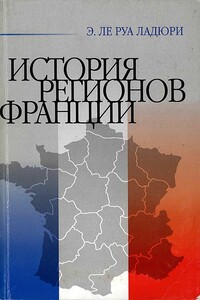
Эмманюэль Ле Руа Ладюри, историк, продолжающий традицию Броделя, дает в этой книге обзор истории различных регионов Франции, рассказывает об их одновременной или поэтапной интеграции, благодаря политике "Старого режима" и режимов, установившихся после Французской революции. Национальному государству во Франции удалось добиться общности, несмотря на различия составляющих ее регионов. В наши дни эта общность иногда начинает колебаться из-за более или менее активных требований национального самоопределения, выдвигаемых периферийными областями: Эльзасом, Лотарингией, Бретанью, Корсикой и др.
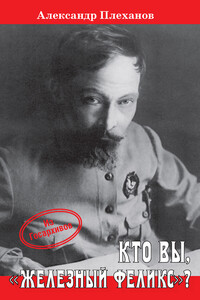
Оценки личности и деятельности Феликса Дзержинского до сих пор вызывают много споров: от «рыцаря революции», «солдата великих боёв», «борца за народное дело» до «апостола террора», «кровожадного льва революции», «палача и душителя свободы». Он был одним из ярких представителей плеяды пламенных революционеров, «ленинской гвардии» — жесткий, принципиальный, бес— компромиссный и беспощадный к врагам социалистической революции. Как случилось, что Дзержинский, занимавший ключевые посты в правительстве Советской России, не имел даже аттестата об образовании? Как относился Железный Феликс к женщинам? Почему ревнитель революционной законности в дни «красного террора» единолично решал судьбы многих людей без суда и следствия, не испытывая при этом ни жалости, ни снисхождения к политическим противникам? Какова истинная причина скоропостижной кончины Феликса Дзержинского? Ответы на эти и многие другие вопросы читатель найдет в книге.

Пособие для студентов-заочников 2-го курса исторических факультетов педагогических институтов Рекомендовано Главным управлением высших и средних педагогических учебных заведений Министерства просвещения РСФСР ИЗДАНИЕ ВТОРОЕ, ИСПРАВЛЕННОЕ И ДОПОЛНЕННОЕ, Выпуск II. Символ *, используемый для ссылок к тексте, заменен на цифры. Нумерация сносок сквозная. .
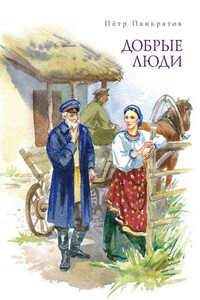
В книге П. Панкратова «Добрые люди» правдиво описана жизнь донского казачества во время гражданской войны, расказачивания и коллективизации.

В книге сотрудника Нижегородской архивной службы Б.М. Пудалова, кандидата филологических наук и специалиста по древнерусским рукописям, рассматриваются различные аспекты истории русских земель Среднего Поволжья во второй трети XIII — первой трети XIV в. Автор на основе сравнительно-текстологического анализа сообщений древнерусских летописей и с учетом результатов археологических исследований реконструирует события политической истории Городецко-Нижегородского края, делает выводы об административном статусе и системе управления регионом, а также рассматривает спорные проблемы генеалогии Суздальского княжеского дома, владевшего Нижегородским княжеством в XIV в. Книга адресована научным работникам, преподавателям, архивистам, студентам-историкам и филологам, а также всем интересующимся средневековой историей России и Нижегородского края.
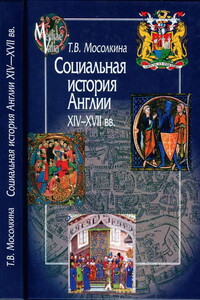
Исходя из нового понимания социальной истории, включающего в себя весь спектр жизни общества — от экономических отношений до различных форм повседневности, в книге представлена картина внутренней общественно-политической, материальной и интеллектуальной динамики Англии за несколько столетий — начиная с XIV и заканчивая XVII в. Опираясь на многочисленные источники разных английских городов, автор исследует соотношение промышленности и торговли в экономическом развитии страны, цехового и внецехового ремесла, складывание рынка наемного труда в центрах урбанизации, разложение ремесленных гильдий и возникновение новых форм производства.
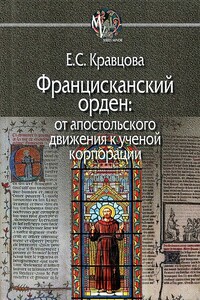
В предлагаемом вниманию читателей исследовании анализируется разнообразная деятельность "Ordo Fratrum Minorum" в XIII в., проходившая в пределах Французского королевства Уточняются характеристики этапов трансформации Ордена из апостольского религиозного движения, не ограниченного институциональными рамками, в средневековую ученую корпорацию; выясняется, что одним из ее основных свойств было воспроизведение особенностей тех структур, в которые она следуя принципу апостольского служения, интегрировалась.
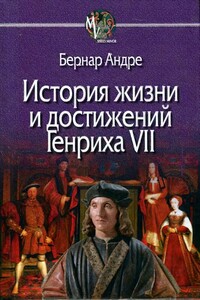
«История жизни и достижений Генриха VII» ("De Vita atque Gestis Henrici Septimi Historia", ок. 1500–1502 гг.) — первый официальный литературный памятник (помимо хроник) периода ранних Тюдоров, запечатлевший победу Генриха Ричмонда над Ричардом III Йорком в битве при Босворте в 1485 г. и последовавшие годы триумфа новой династии. Ее автором является Бернар Андре (1450–1522), французский гуманист, английский придворный поэт и историограф, учитель принцев Артура и Генриха (будущего Генриха VIII). «История жизни…» — биография монарха, в которой наибольшее внимание уделяется вопросам генеалогии правителя, легитимности династии Ланкастеров, праву Генриха быть их наследником, жестокости врагов короны. Публикуемый перевод, осуществленный с латинского языка, снабженный вступительной статьей и комментариями, будет интересен не только историкам, политологам, правоведам, но и широкому кругу читателей.
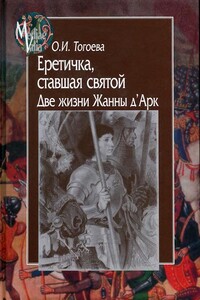
Монография посвящена одной из ключевых фигур во французской национальной истории, а также в истории западноевропейского Средневековья в целом — Жанне д’Арк. Впервые в мировой историографии речь идет об изучении становления мифа о святой Орлеанской Деве на протяжении почти пяти веков: с момента ее появления на исторической сцене в 1429 г. вплоть до рубежа XIX–XX вв. Исследование процесса превращения Жанны д’Арк в национальную святую, сочетавшего в себе ее «реальную» и мифологизированную истории, призвано раскрыть как особенности политической культуры Западной Европы конца Средневековья и Нового времени, так и становление понятия святости в XV–XIX вв. Работа основана на большом корпусе источников: материалах судебных процессов, трактатах теологов и юристов, хрониках XV в.